Gintastic! The Weird And Wonderful World Of Today’s Oddball Gins (Warning: Some Are Just Mad As A Hatter!)
by Ken Gargett
What do truffles, Harley-Davidson motorcycles, trout, elephant dung, and green ants have in common? These items and countless more have all been used to make specialist craft gins. Sure, gin needs juniper. But after that it is open slather. Indeed, it is hard to think of a plant, herb, root, flower, leaf, and much more than has not been used to make gin. And some of them are just batsh*t crazy
What do truffles, Harley-Davidson motorcycles, trout, elephant dung, and green ants have in common?
Green ants, by the way, were the bane of every Aussie kid’s life when I was young, an era before video games and computers when we’d play outdoors with our mates. If you fell on a green ant nest, you were guaranteed a bundle of itchy, very painful bites.
But I digress. Those items, and countless more, have all been used to make specialist craft gins. Sure, gin needs juniper. But after that it is open slather. Indeed, it is hard to think of a plant, herb, root, flower, leaf, and much more than has not been used to make gin.
Gin, as we saw in Gincredible! How And Why Gin Went From Murderous Swill To 007-Level Cool, has exploded, but not just with the standards. Gin distillers have become more prevalent than political pundits, and I know which the world is better off having. Everyone wants and needs their gin to be different as it competes with battalions of bottles from around the globe.
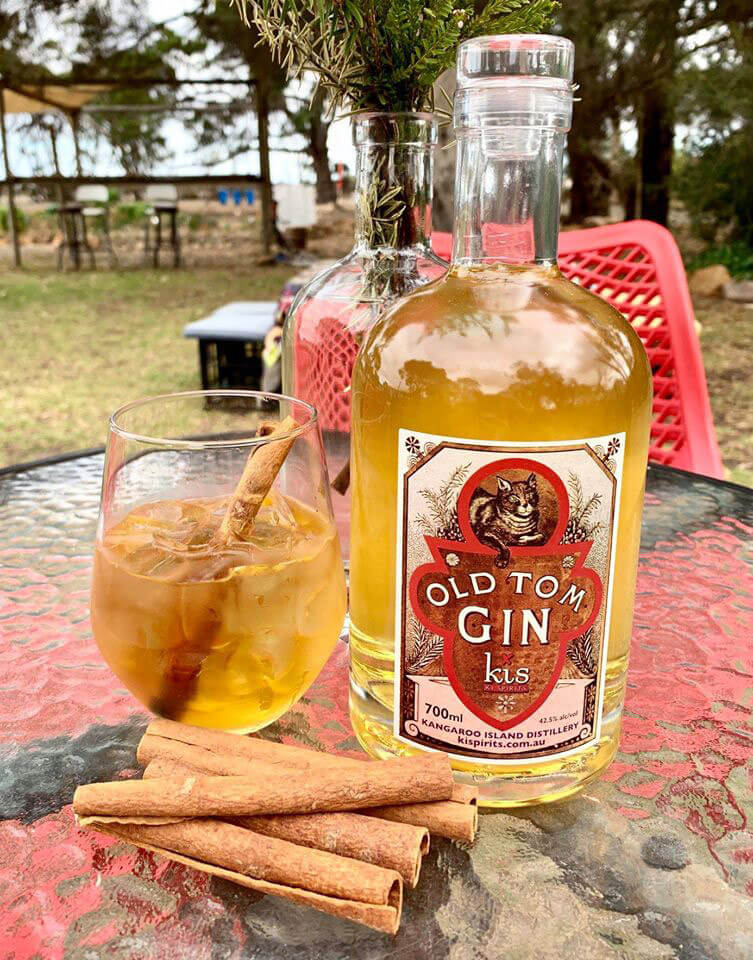
Old Tom Gin by Kangaroo Island Spirits
The gins out there today from down under
It seems highly unlikely that we shall ever unravel the timeline of just who started all this, but my suspicions are that it was an evolution. One distiller tried something. The next would push the envelope just a fraction more. And so on until we had a fully-fledged revolution on our hands. Every day, it seems there are new, weird gins.
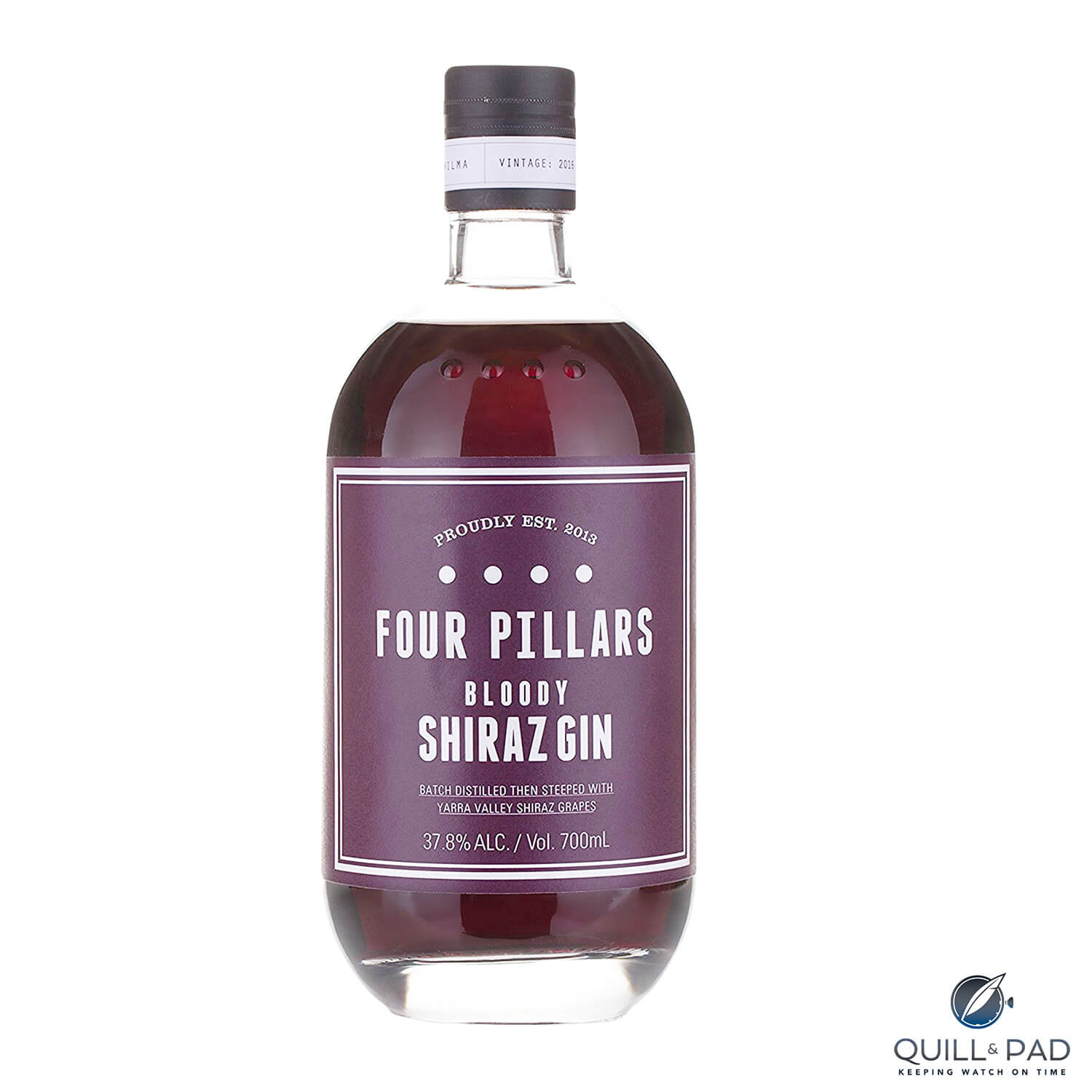
Four Pillars Bloody Shiraz Gin
In Australia, Four Pillars kicked it off with its now incredibly popular Bloody Shiraz Gin, which was one of the first drinks I ever reviewed for Quill & Pad. It was made by macerating some quality Shiraz grapes in the gin.
Others have followed. Then they got silly (two of the team behind Four Pillars, Cameron McKenzie and Stu Gregor, are the gin versions of Willy Wonka and PT Barnum) and marinated some of Cam’s mum’s annual plum puddings to make the first of their cult, though delicious, Christmas gins.
Four Pillars has made some great stuff, but occasionally it does not work so well. As a tribute to those late nights in local pubs listening to aspiring bands, the guys came up with the idea of a Sticky Carpet Gin. I suppose it did work in that it tasted and smelled exactly like the barroom carpet the morning after.
Other Australian distillers have also done some fabulous stuff. Kangaroo Island Spirits took home the trophy for Champion Gin at the Australian Distilled Spirits Awards for its Old Tom Gin. Kangaroo Island is Australia’s third largest island, found off the South Australian coast.
The distillery used native plants to provide the unique flavors, including the coastal daisy bush, native juniper, locally grown lemon myrtle, and aniseed myrtle (hey, they have to be better than the “bog myrtle” used in the Scottish gin Caorunn). Sadly, Kangaroo Island was very badly hit by the bushfires. We are hopeful that in time, it, and all the businesses on the island, make a full recovery. Support them if and when you can.
Archie Rose, another superb local distiller, has been known to use red miso, sesame seed, and sansho pepper in making gin.
I remember a delightful, delicious Black Truffle Gin from the Stone Pine Distillery in South Australia (its Orange Blossom Gin was popular at Noma). The founder went on a truffle hunt to source the truffles himself. Dedication. Truffle gins have been made from the UK to the Kalahari.
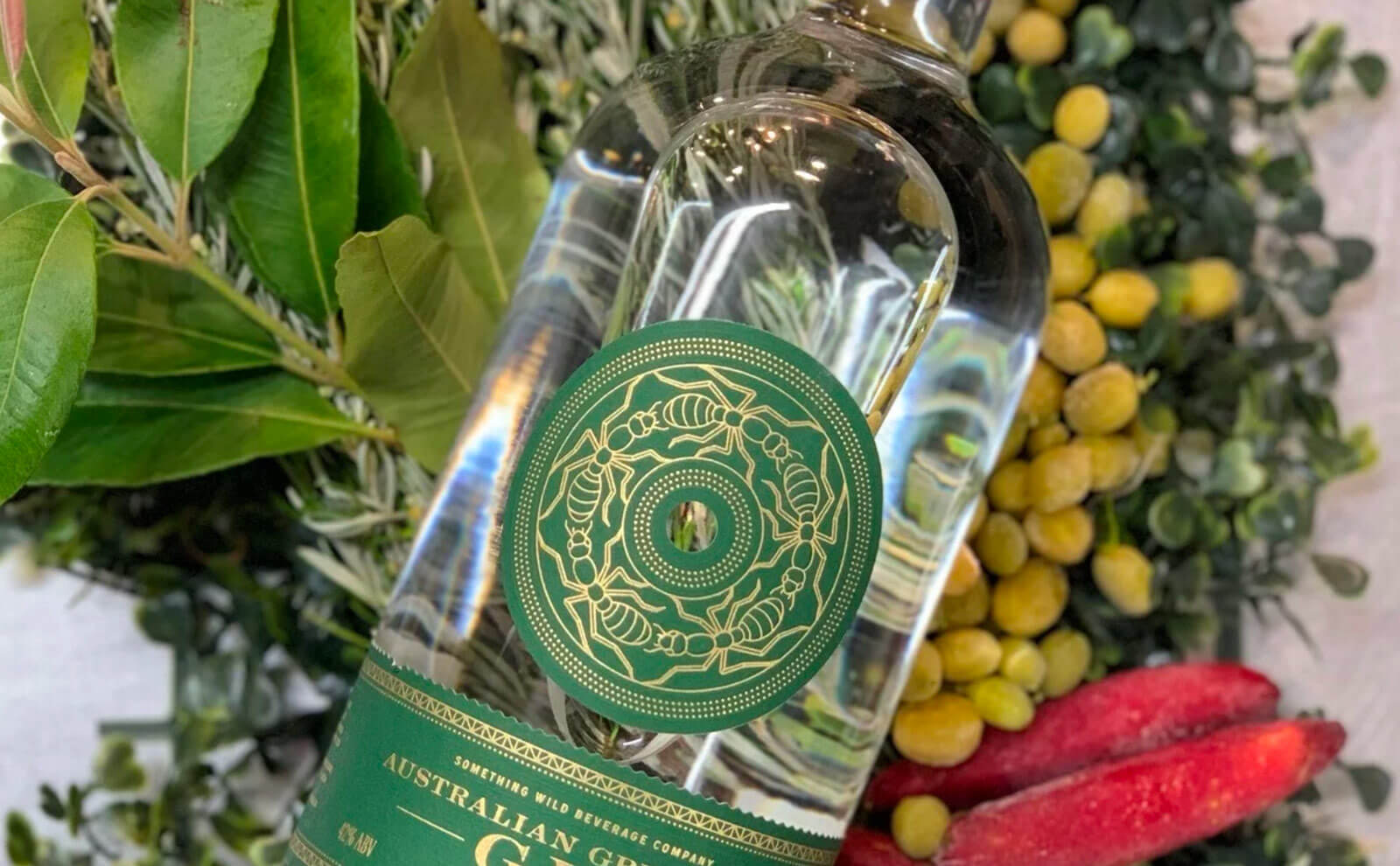
Something Wild Beverage Company green ant gin
Green ants? Not one but two Adelaide Hills (better known for terrific wine, but another region devastated by bushfires) distilleries released Green Ant Gins in past years: the Something Wild Beverage Company and Applewood Distillery. I’ve not tried either, but I am very glad I didn’t have to collect the ants.
They say the ants taste like lime and coriander (as do lime and coriander). Surely someone sent a bottle to the Marvel people to go into the next Antman movie? And these were not the first ant gins made.
A team in Cambridge used red wood ants, a strict 62 ants per bottle. (And you thought this wasn’t going to get weird.) By the way, Applewood is rumored to have even used the durian fruit in making gin. For those not familiar, it is considered by many as the greatest, and certainly most controversial, of all fruits. My favorite description (and I love the stuff) is that is like “eating custard over an open sewer.”
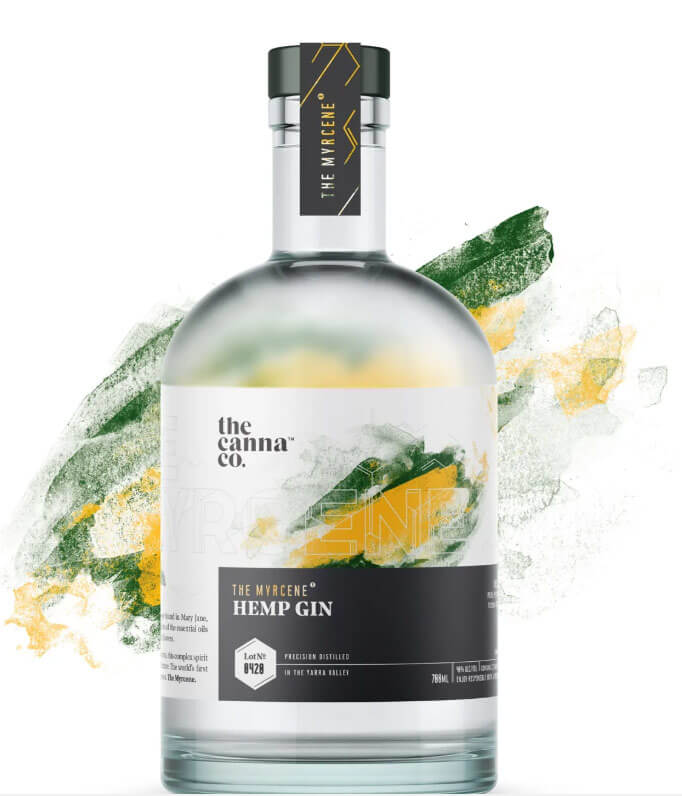
The Myrcene Hemp gin
Concerned about the morning after? A Melbourne distillery, The Myrcene Hemp Gin Company, made what it has called the “world’s first cannabis gin with terpenes” and named it “The Cannabis.” It sold out in three days.
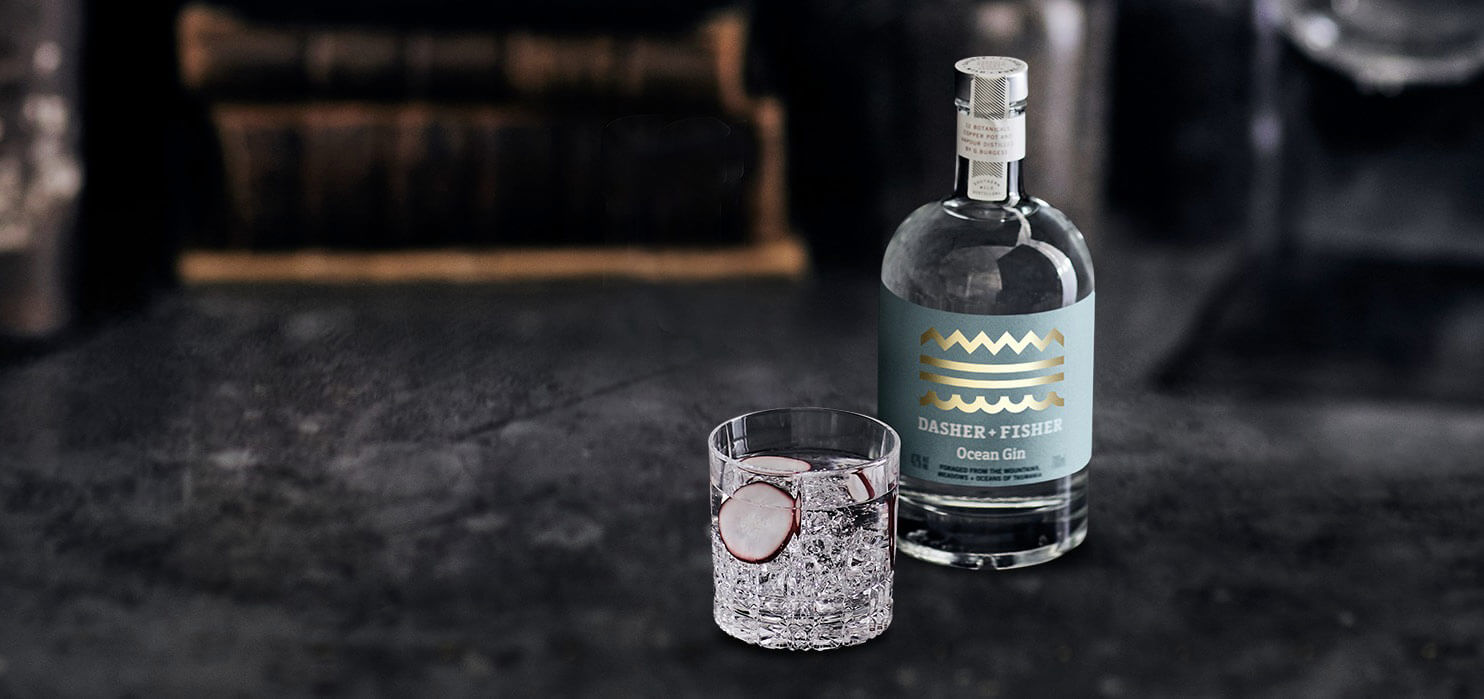
Dasher & Fisher Ocean Gin
Every place has its own botanicals, hence the extraordinary range of different options for distillers. The excellent range of Tasmanian gins from Dasher & Fisher include such intriguing ingredients as wakame seaweed and native pepperberries. Australia has some 24,000 indigenous plants so we have a long way to go.
New Zealand has plenty of its own botanicals of course: Kawakawa, Horopito, and Manuka for example. Manuka honey is internationally famous. The others are New Zealand plants/trees. Another botanical recently encountered is gunpowder green tea. Nothing is off limits.
Quandong Gin, anyone (a native fruit)? How about using pigface? Well, it sounds better when you call this small native fruit by its aboriginal name of karkalla.
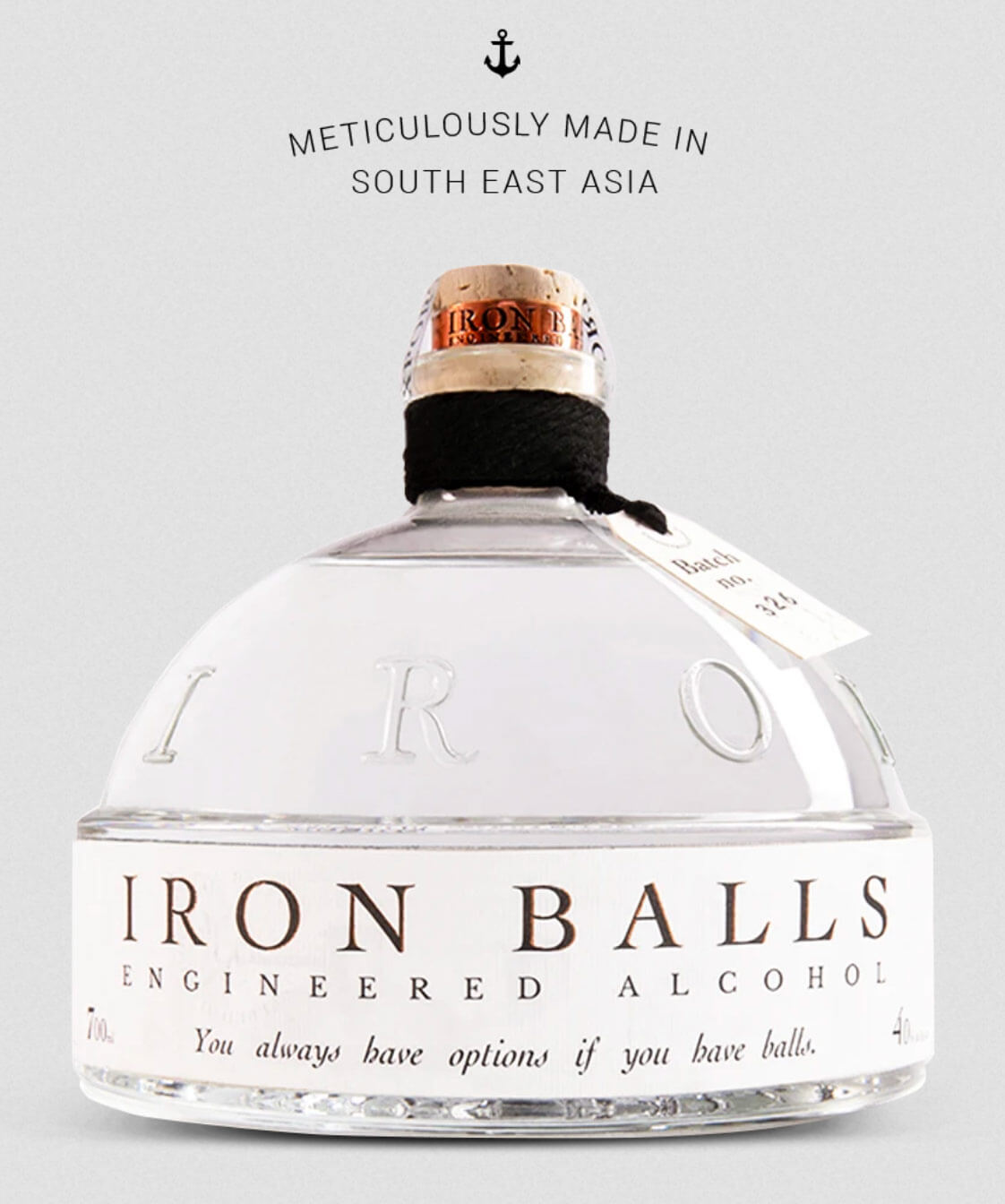
Iron Balls gin
Not strictly Aussie, though made by one in Southeast Asia, Iron Balls Gin includes coconuts, pineapples, ginger, and lemongrass.
The gins out there today: international options
Australia is but a drop in the bucket when it comes to odd gins. Allow me to offer you some international options.
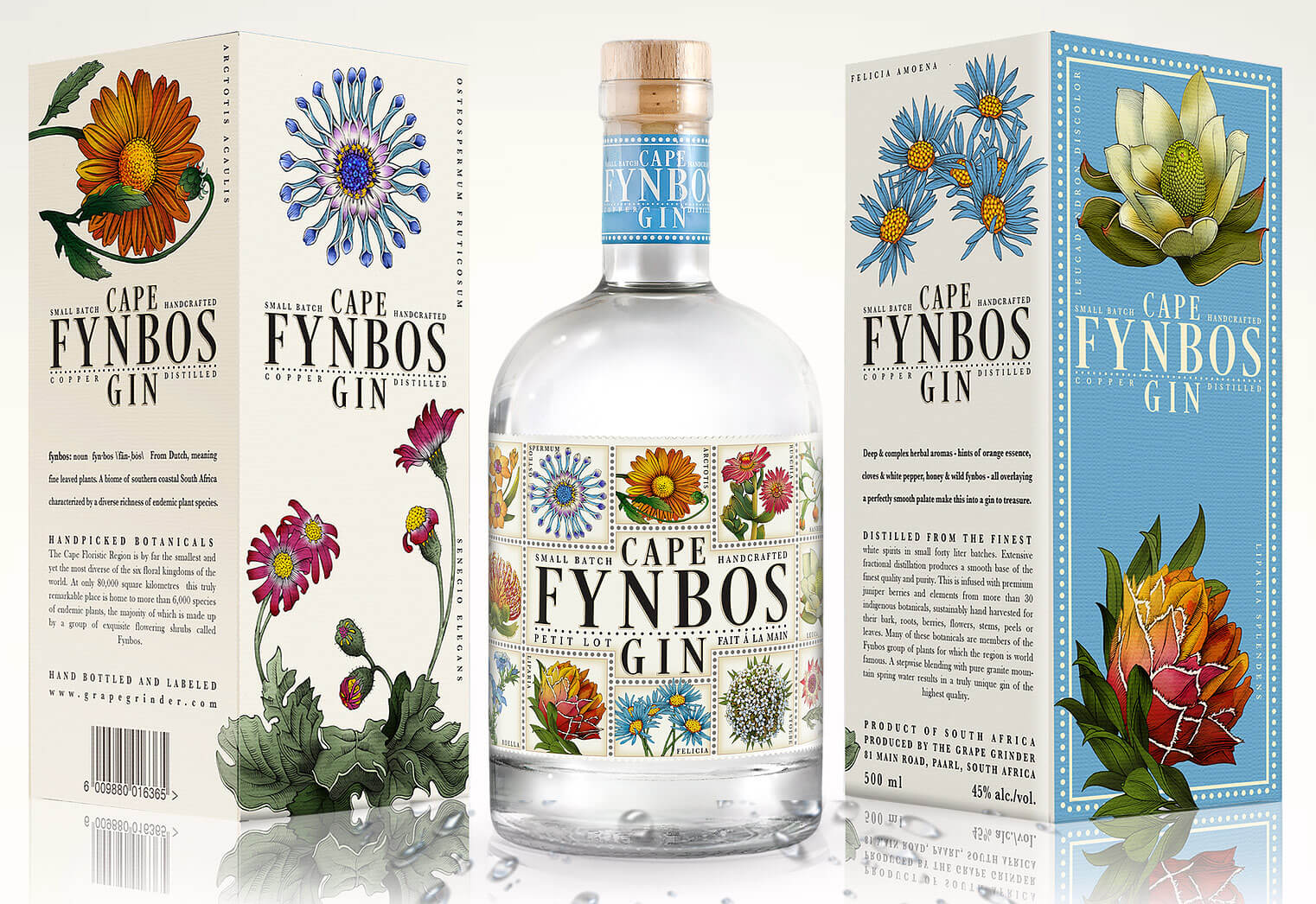
Cape Fynbos gin
From the Cape District in South Africa, I give you Fynbos Gin. Fynbos is, if I have this right, a small area near the Franschhoek mountains with many native botanicals. Buchu and kapokbos, anyone?
But it is positively mainstream compared to many. Whitley Neill, originally from London but now living and distilling in South Africa, offers Gin Baobab using fruit from the baobab tree and gooseberries.
We are just warming up.
Even though countries like Spain and the Philippines drink more gin than the UK, many automatically think England when thinking gin, yet around 70 percent of the gin made in the UK comes from Scotland. One would have thought those distillers would be too busy creating their great whiskies. Apparently not.
The obvious one is the fabulous Hendricks, first released back in 2000. Most of us think cucumber when we think Hendricks (not your obvious gin component, and this really was one of the very early “weird” gins, but it succeeded because it is simply so good), but there are numerous flavors here, not least rose petals.
Apparently they are Bulgarian rose petals (I’d like to think Philip Pullman might have been sipping on Hendricks while he wrote the volumes of The Book of Dust, which will only make sense if you have read them).
One way to differentiate your gin from your neighboring distiller is alcohol level. Strane has done this with its Uncut London Gin, which comes in at a whopping 76 percent. So, a sip of your Strane or an entire bottle of wine? Same effect.
I’m not sure I’ve encountered any gin using more botanicals than the wonderful Monkey 47, but plenty use more than 20. Of course juniper is crucial to gin, but many feature something a bit interesting.
For example, another Scottish gin, Eden Mill from the famous golfing town St. Andrews, uses sea buckthorn, one of the very many botanicals, herbs, plants, and concoctions used in gins around the world that is completely unfamiliar to me.

I promised you trout. Well, sort of. Google “Battenkill Gin” – Battenkill is a trout stream in the United States. Each bottle supposedly has a tiny baby trout in it, much like the Mezcal worm.
It is said that if you swallow the fish, you’ll have good luck on your next fishing trip. I was ready to believe it. If we can have motorcycle parts, what is so weird about trout? But it was, apparently, an elaborate and extremely successful April Fools’ Day prank.
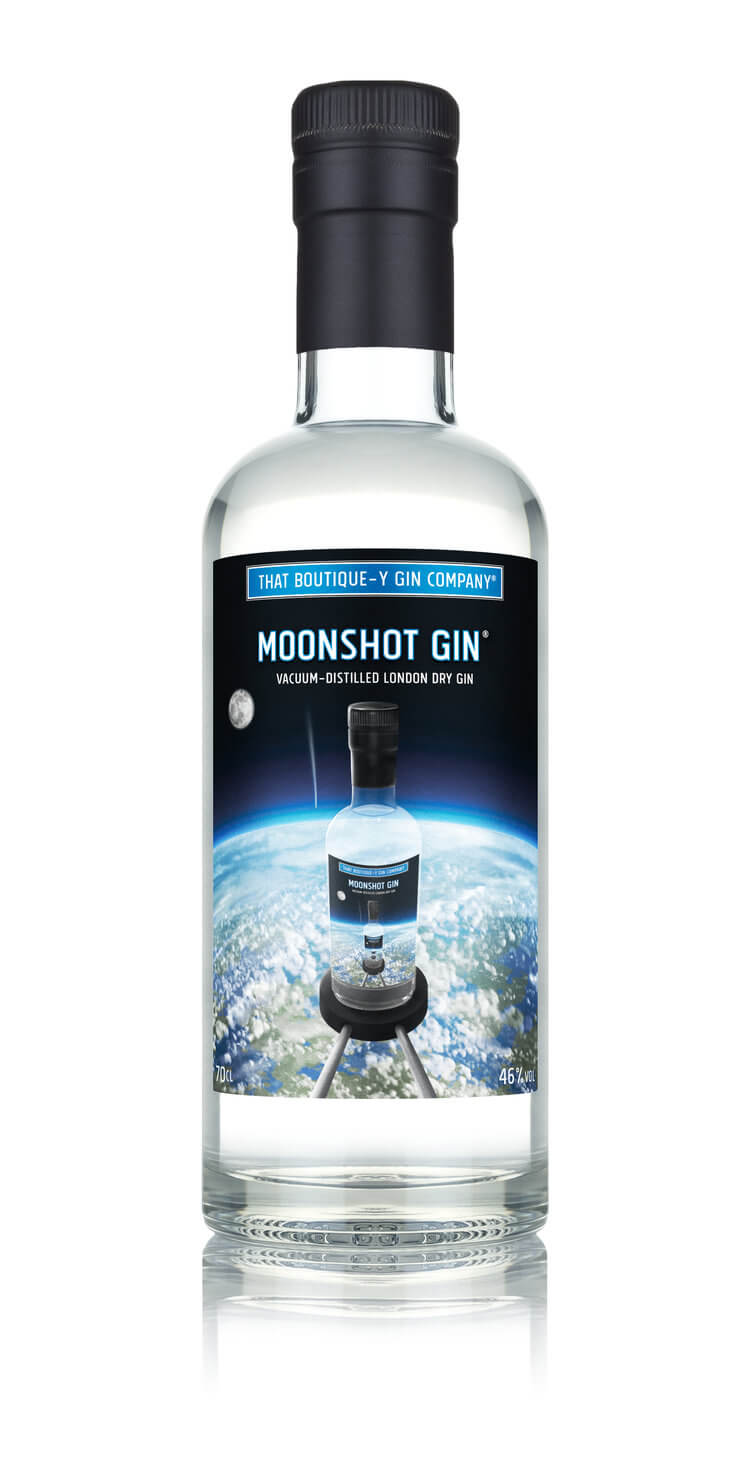
Moonshot Gin
If Moonshot Gin from the That Boutique-y Gin Company is not an April Fools’ Day prank, it should be. All of the botanicals used for this gin, including juniper, coriander, chamomile flowers, fresh lemon peel, cardamom, dried bitter orange peel, cinnamon, cubeb pepper, licorice root, angelica, and moon rocks (part of a meteorite) were all flung into space, 24 kilometers high, to where the pressure is 1/100th that at sea level, and then vacuum distilled on their return at a pressure 1/16th that at sea level.
The claim is that it “increases freshness and elegance.” Look for it in the next Star Trek movie.
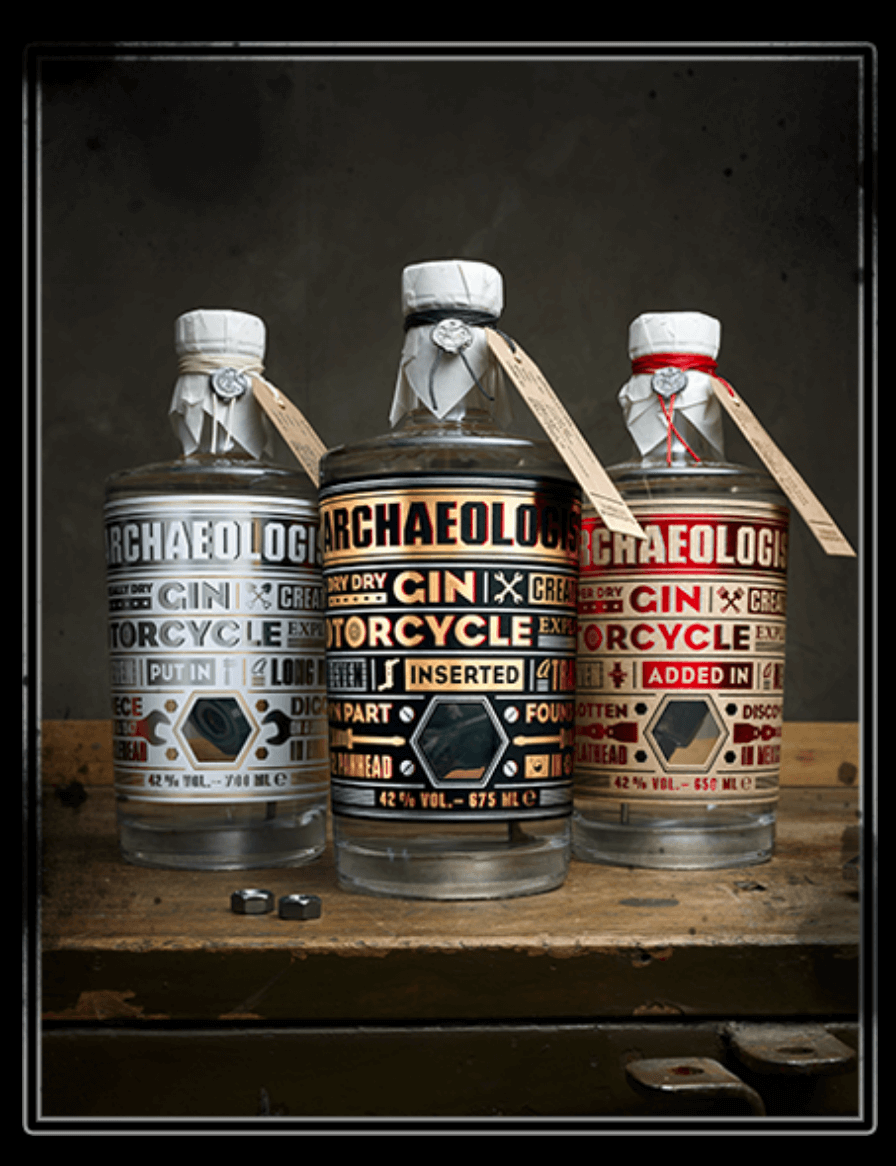
The Archaeologist gins
You think that is batsh*t crazy? Let me give you The Archaeologist Gin. Well, I have no intention of actually giving you any as each bottle will set you back over a grand.
Uwe Ehinger from Germany is apparently fond of two things: motorbikes and alcohol (though hopefully not at the same time). Ehinger decided to combine his passions (he is famous as a manufacturer of custom-made motorbikes and a dedicated seeker of old motorbikes, wherever in the world they might be – hence, “the archaeologist”).
So he made a gin and called it just that. Infused with actual vintage Harley-Davidson parts, it is also apparently not a prank.
In each bottle, you’ll find a different part from a Harley that Ehinger has found somewhere. The list includes 1939 Flathead camshafts from the Mexican desert, 1947 Knucklehead screw-nuts from Chile, and 1962 Panhead rocker arms from South Korea (I have absolutely no idea what any of those things are, but apparently they form part of a Harley).
The parts are cleaned and sealed with a tin alloy, making them safe to go in the bottle (and kind of defeating the purpose, one would have thought). Each release sells out immediately.
London-based Portobello Road Gin offered as part of its Director’s Cut series a gin made by distilling turkey breasts. At least they were organic turkeys. Other botanicals included apples, pears, plums, currants, raisins, sultanas, apricots, brown rice (seriously? This is sounding more like dinner than drinks), passionfruit, cinnamon, cassia bark, nutmeg, and mace.
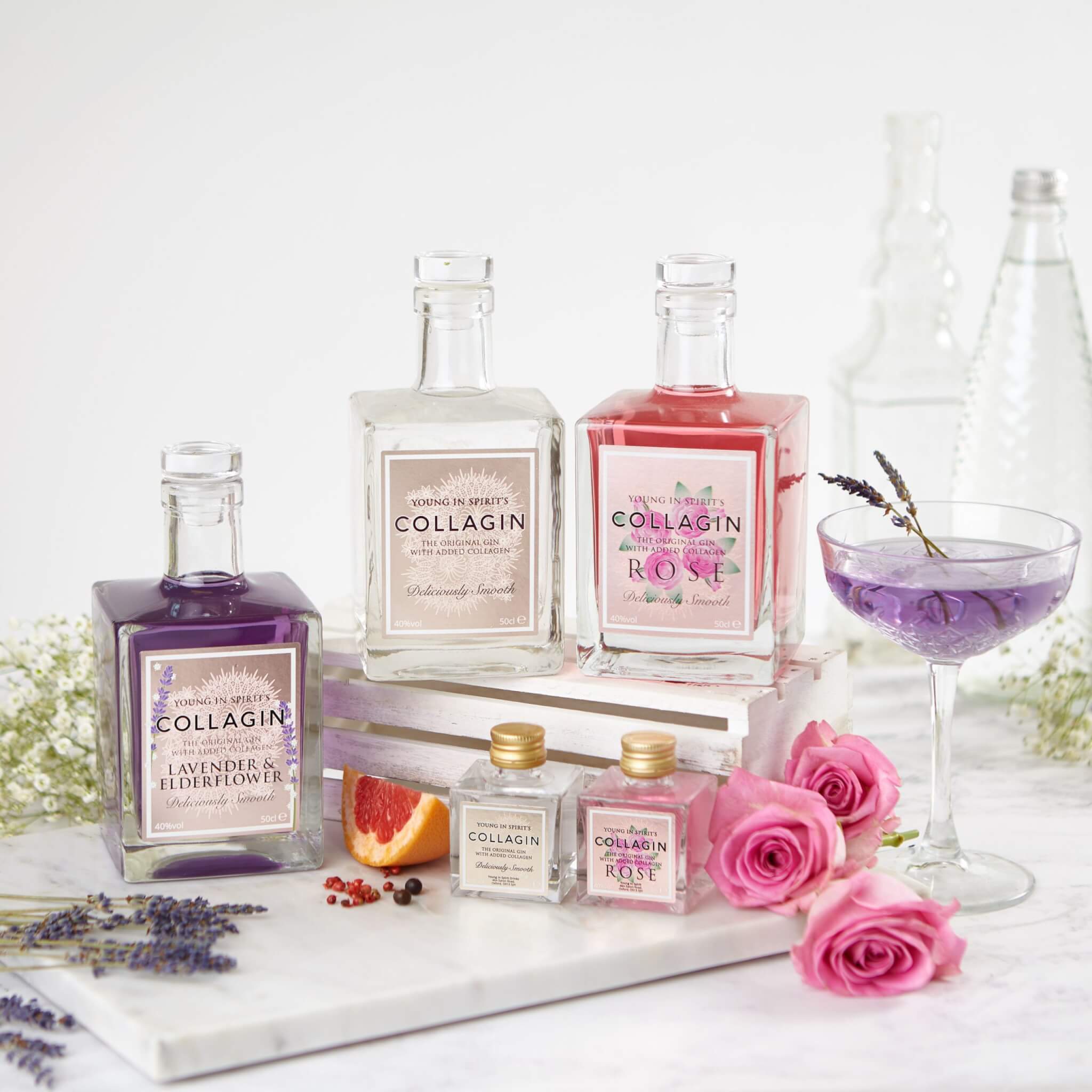
Collagin gin
Young in Spirits makes a gin distilled with collagen. At least it has a nifty name: CollaGin.
Weird and weirder gin
That Boutique-y Gin Company does more than simply send stuff into space. It also offers – and it really doesn’t get much more down to earth than this – Dead King Gin. The aim was to feature the aromas one encounters from a freshly unwrapped Egyptian mummy – I’ll have to take their word for that, but I really want to know how on earth they came up with that idea. Who wakes up and says let’s make a gin that smells like a 3,000-year-old corpse? Or am I simply behind the times?
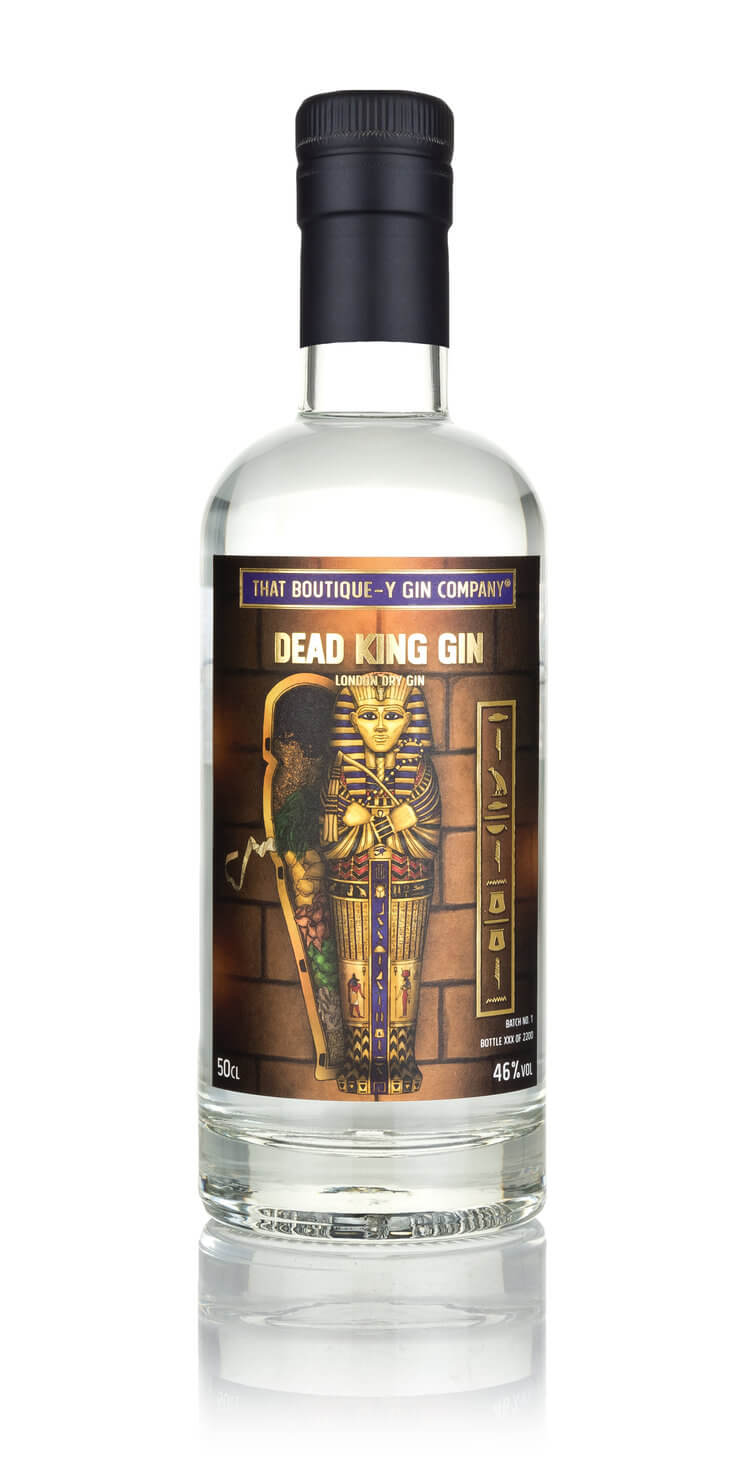
Dead King Gin
The distillery achieves that by using botanicals that were traditionally utilized in the embalming process such as rosemary, honey, moss, and myrrh. It also makes gin with hot sauce and another called Bog Gin, which includes lichen.
Then we have Cathedra English Gin made by the Brindle Distillery in Lancashire for the Blackburn Cathedral to enhance the church’s coffers. To be honest, the botanicals of juniper, orange, elderflower, almond, and vanilla are strictly mainstream, but it gets a mention for the greatest missed marketing opportunity since Decca knocked back the Beatles. Why on earth, or perhaps what in heaven, possessed them not to call it “the Holy Spirit”?
It has long been known, or at least strongly rumored, that certain members of the British royal family are rather partial to gin. Well, now they make the stuff (yes, it will be available for just 40 quid at Royal Collection gift shops, whatever they are. Buck House does souvenirs? No wonder Harry and Meghan fled the country).
And the botanicals? Apparently grown on the grounds of Buckingham Palace, they will include lemon verbena, hawthorn berries, bay leaves, and mulberry leaves. It seems mulberry trees are somewhat of a royal tradition beginning with James I, with more than 40 species residing in the palace gardens.
Perhaps not quite so near to the divinities or royalty is gin infused with elephant dung. Indlovu Gin, named after the Zulu word for elephant, is apparently a lot nicer than you would expect with a smoky, earthy note. I’ll have to take their word for it – though who wouldn’t want to try it at least once.
Co-founder Paula Ansley got the idea when visiting a game reserve and learning that elephants usually digest only around 30 percent of what they consume. So out comes a large plop of leaves, bark, nuts, fruits, flowers, and so forth. Instant botanicals.
Some may feel it would have been simpler to just get their own leaves, bark, nuts, fruits, flowers, and so forth. But where is the fun in that?
They do dry, wash, sterilize, macerate, and re-dry the gifts bestowed by the elephants; 15 percent of the profits go back into conservation. The distillery’s consultant came up with the immortal offering (surely, this would be your advertising slogan?), “If you’re going to make gin from shit, you can’t make a shit gin.”
The next stage in the evolution was always going to be who could make the world’s most expensive gin
Breaking the mold was Nolet’s Reserve Gin Modern (the same people are behind Kettle One Vodka), which was a limited edition gin featuring verbena and saffron for $632. Then, of course, we have The Archaeologist at over a grand.
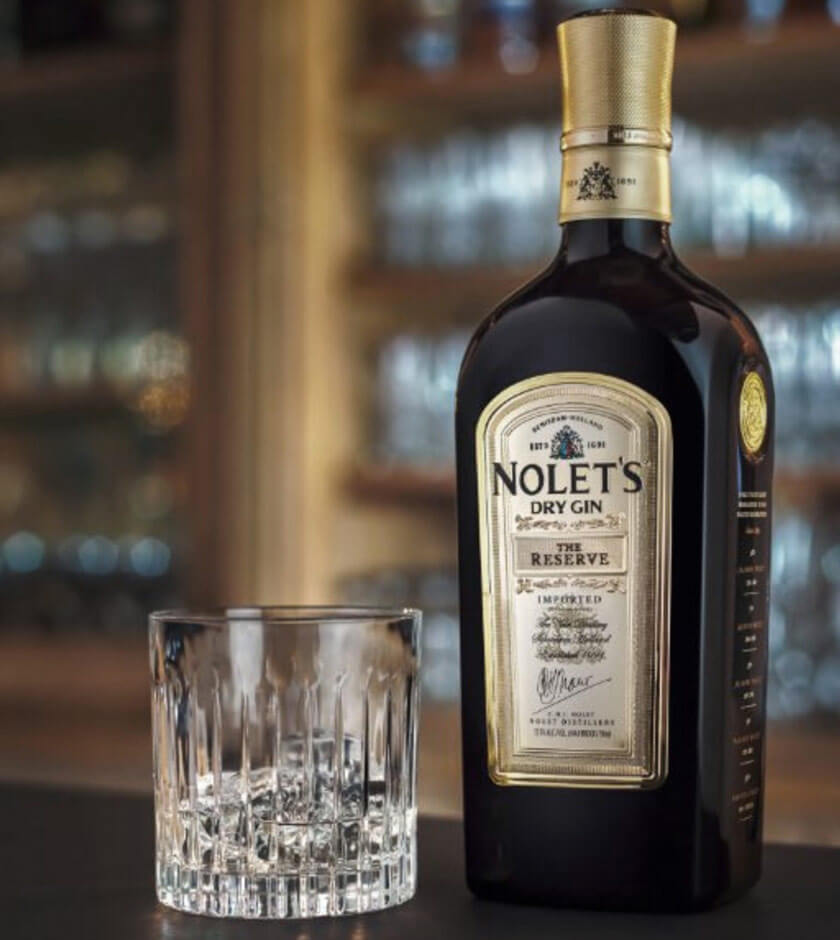
Nolet’s The Reserve dry gin
It did not take long for those to be swept aside. Cambridge Distillery launched Watenshi, a gin basically made from what distillers call the angel’s share – that part of the process where evaporation occurs.
This gin, with botanicals such as yuzu peel, shiso leaf and sesame seeds, is distilled 50 times (at a pressure half of that found at the top of Mount Everest). Just one percent of the distillation is captured each time – part of what is evaporating. An extraordinary 15 milliliters at a time.
No wonder the production for each batch is a miserable six bottles. Offered in a special hand-blown decanter at Selfridge’s, it sells at £2,000 a bottle.
And now we have Morus LXIV. Made from the distilled leaves of a single ancient mulberry tree (plus “complimentary botanicals”) exclusive to Harvey Nichols, it is sold in “handmade porcelain jars” for an eye-watering £4,000 a bottle (or, more correctly, jar). The company does not define “ancient.”
Coming in at a serious 64 percent abv cask strength, it takes two years to mature (whisky distillers must weep in envy). Again, all of this is apparently not an April Fools’ Day prank, though it definitely should be.
This craze isn’t going anywhere soon. In the UK ten years ago, only one in five distilleries produced a gin. Now, only one in five do not produce a gin. And they are becoming ever more imaginative.
To be honest, Mrs. McKenzie’s Christmas cake is now looking rather pedestrian (still one of my faves).
I have to confess I love so many of these gins, although there are plenty I am yet to taste (working on it). But as the great Hunter Thompson used to say – one of my all-time favorite quotes – “when the going gets weird, the weird turn pro.”
And the world of gin has gone both weird and pro.
* This article was first published on August 18, 2020 at Gintastic! The Weird And Wonderful World Of Today’s Oddball Gins (Warning: Some Are Just Mad As A Hatter!)
You may also enjoy:
Gincredible! How And Why Gin Went From Murderous Swill To 007-Level Cool
Monkey 47 Gin: From Failed Watchmaker To Making One Of The Best Gins In The World
Four Pillars Bloody Shiraz Gin: Neon Purple And Guaranteed To Contain No Motorcycle Engine Parts
Beluga Gold Line Vodka: James Bond Should Drink It Neat Rather Than Shaken, Not Stirred
Delamain Cognac: Compelling Evidence For The Benefits Of Time
Leave a Reply
Want to join the discussion?Feel free to contribute!



Interesting collection of gins
Has it ever been easier to waste your money and your mental and physical health all at the same time and never blow ether on the exact same product ?